Tech
Shark vs. Roomba: Comparing top-rated robot vacuum lineups

The new 2025 Roombas just changed everything
This would have been a very different article to read had you stopped by any time before March 2025. Before then, iRobot and Shark were both kind of plateauing in terms of the variety of their respective lineups. It was like a competition to see who could be the most mid — especially compared to the robot vacuums announced at CES.
But the lukewarm rivalry got interesting when iRobot went rogue and overhauled the whole Roomba fleet outside of its typical schedule (the company had previously been saving its big product drops for late summer). The new batch consists of eight new Roombas falling under four different umbrellas: the Roomba 105 or 205, or Roomba Plus 405 or 505, ranging in price from $299 to $999. (This may or may not be a last ditch effort to save the company from a reportedly bleak financial situation.)
These Roombas are so new that I haven't gotten to test them out at home yet. But just based off of descriptions and prices, iRobot seems to have patched up several weak spots in the lineup and prioritized budget friendliness without skimping on features that consumers really care about, like smart mapping in even the cheapest models.
And up until iRobot's March 2025 announcement, neither iRobot nor Shark measured suction power in Pascals (Pa) like most of their competitors do. iRobot finally made the switch, but Shark still insists on keeping an air of mystery by solely comparing suction power to other vacuums in its own family tree. (That's what iRobot was doing with its older models, too.) Shark has also been known to make claims like "50% better suction than the best-selling iRobot. Whatever that means — the weakest Roomba is probably technically one of its best sellers.
Where iRobot and Shark agree: Being weird about suction power disclosure
Pinning down whether iRobot or Shark robot vacuums are stronger is always a challenge, and not just because each offers multiple different vacs with different levels of power at different prices. The two longstanding brands aren't keen on using the standard unit of Pascals (Pa) to measure suction power like the Roborock and Eufys of the world are — an effort that could only be perceived as a secret pact to make my life as a robot vacuum reviewer more difficult than it needs to be.
Instead, both Shark and iRobot like to keep their suction power comparisons within their own families. For instance, they might say a new model offers "x times the suction power" that an older or more basic model of theirs does. iRobot did originally float the idea of switching over to Pa with its March 2025 releases, but actual Pa numbers are still hard to track down online.
Where Roomba wins: Small obstacle avoidance and more models to fit more needs
iRobot simply has more robot vacuums, and that variety alone gives it a leg up on Shark. More models to choose from means more opportunities to customize the features and budget to a shopper's main goals for automated cleaning.
Let's say you're willing to pay a little extra for a premium robot vacuum that achieves the most hands-off experience possible. iRobot has several options with features that make a robot vacuum increasingly self-sufficient, including mopping pads that automatically lift over carpet, self-empty docks that also wash and dry the mopping pads, and small obstacle avoidance cameras.
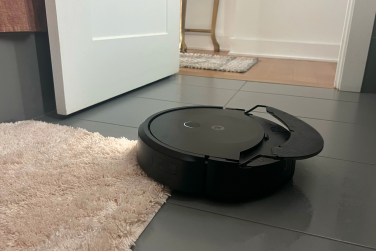
Credit: Leah Stodart / Mashable
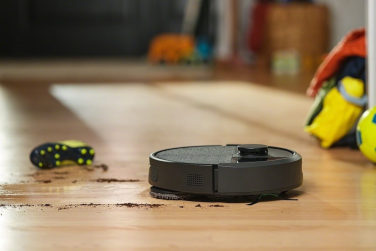
Credit: iRobot
But floor type is far from the most impressive thing the smarter Roombas recognize. All j series Roombas, the Roomba Combo 10 Max, and the Roomba Plus 505 Combo all have small obstacle avoidance technology, which solves the main gripe that many robot vacuum non-believers have: robot vacuums get stuck so often that they're more trouble than they're worth. These Roombas use a special camera system to help them recognize and avoid small obstacles that less-advanced robot vacuums would typically eat, like a phone charger, extension cord, rogue sock, or pet waste.
I first experienced this sense of relief when reviewing the Roomba j7+ and Combo j7+, and it was never easy to get back into the habit of pre-tidying when trying another robot vacuum that didn't have that. I'd easily sacrifice more intense cleaning for a robot vacuum to have the brain cells to do that.
One of the coolest parts about the Roomba lineup is that you can mix and match several of these features to stay within a certain budget. You can skip all of the other fancy features while still bringing home small obstacle avoidance with the standalone Roomba j7 for as little as $299 on sale, or try out the space-saving DustCompactor design with or without mopping for under $500. Even the cheapest 2025 Roombas guarantee LiDAR-powered smart mapping and 70 times (read that again) the suction power of the 600 series Roombas, which were the go-to base tier Roombas two years ago.
I'd just like to say that I basically called iRobot's most recent move in an older version of this piece from spring 2024, saying that "iRobot would also be wise to drop a more budget-friendly option with carpet-centric suction power." People sticking to a certain budget shouldn't inherently have to settle for a rinky-dink cleaner, and iRobot finally realized that that's the piece that was missing in its entry-level tier.
Where Roomba loses: The ultra-affordable end of the spectrum
Plummeting earnings one month, a random revamp of the entire Roomba line the next month — if we're trying to read between the lines, I'd say it became glaringly obvious that people were getting sick of Roombas costing a lot but not doing enough.
While the 2025 Roomba releases do show that iRobot is pandering to the value-minded crowd harder than ever before, the cost-per-feature situation is still stiff in the $400-and-under category. Is it too overpriced, too late for iRobot?
For instance, I think that the perfect starter robot vacuum is one with smart mapping and self-emptying — suction can be pretty basic. In Roomba world, the cheapest option for this is the Roomba 105 + AutoEmpty Dock, going for $449.99. In Shark world, the same capabilities can be secured for $329 at full price.
Then, iRobot's $200 to $300 assortment is almost comically Not Worth It. In April 2024, iRobot fumbled a low-hanging opportunity to right the disappointments of its budget section. Admittedly, the $249.99 Vac Essential, $274.99 mopping Roomba Combo Essential, and slightly more expensive self-emptying versions do provide a more powerful clean than the older 600 series. But the cheap Roomba's fatal flaw remains: they still don't have smart mapping, a feature I feel is ~Essential~ in any robot vacuum. A handful of Sharks at the same prices with comparable suction power do smart map.
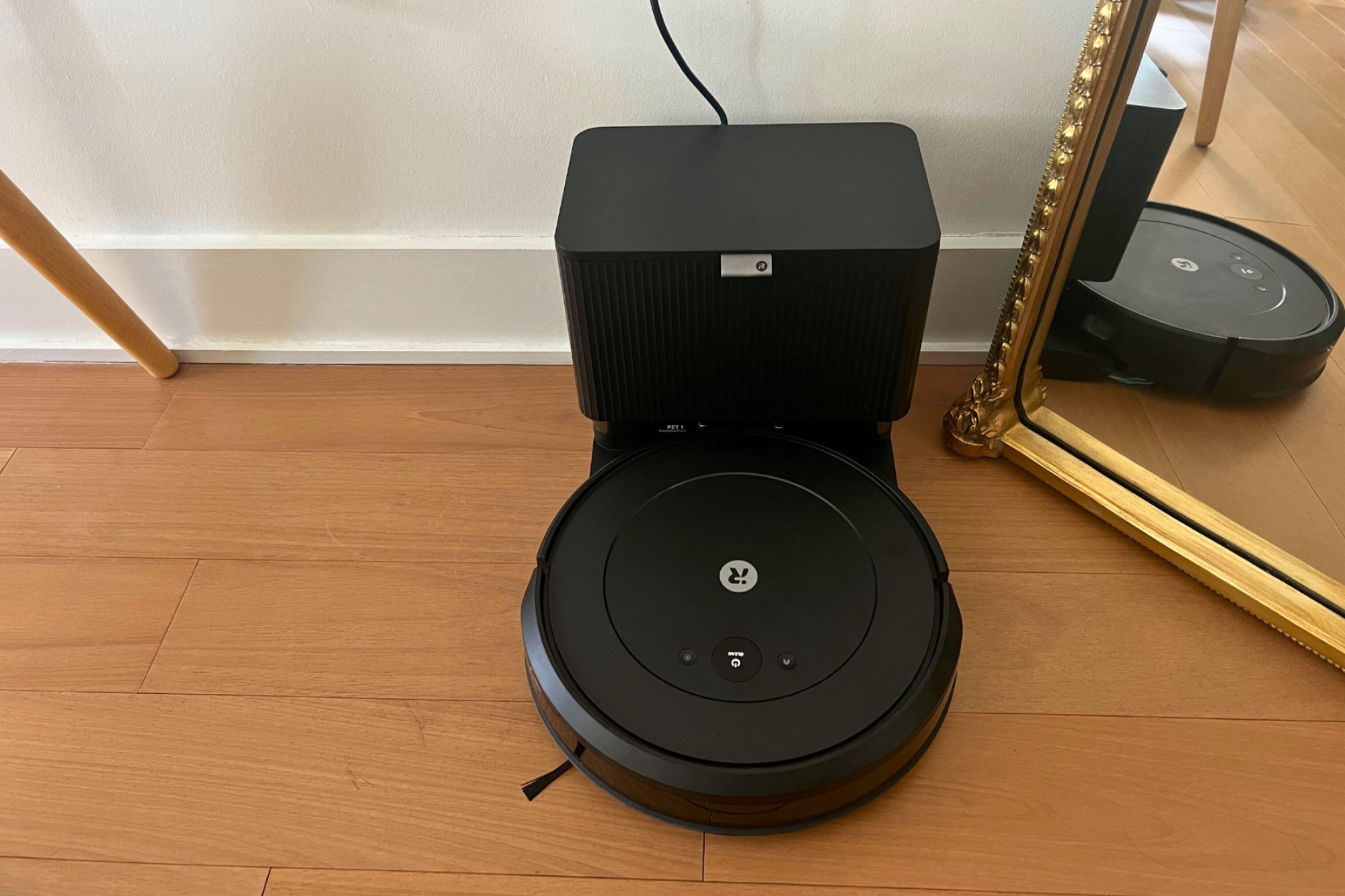
Credit: Leah Stodart / Mashable
Sure, all of these base-tier Roombas do go on sale often. You could technically score the absolute cheapest Roomba for around $130 or a mopping, self-emptying Roomba for $280. But settling for no specific room cleaning just isn't worth it, especially when a similar wad of cash could get you way further if you were buying a Shark (or a Eufy or a Dreame model).
In my experience, just hitting "go" and letting a robot vacuum clean aimlessly is a recipe for coming home to a robot vacuum lost under the bed. The zigzag pattern feels like a hit-or-miss guessing game made more annoying by getting stuck and missing spots on the floor that I'd rather just hit with my Dyson stick vacuum, anyway.
Where Shark wins: Spot cleaning and affordability
Shark has been much more in tune with what the average person is willing to spend on a robot vacuum. The brand consistently offers core capabilities like smart mapping and mopping at lower prices than its Roomba counterparts — a level of cost-effectiveness that should be particularly enticing to strict budget shoppers or first-time robot vacuum owners.
Shark's more approachable price points don't necessarily mean it skimps on cleaning performance, though.
I have both my beloved cordless Dyson and, for Mashable testing purposes, at least one robot vacuum at my fingertips at all times. I get a true sense of any given robot vacuum's value when an unexpected mess within a room in my apartment needs to be taken care of right now. So my favorite thing that I've noticed about Shark robot vacuums is that they make spot cleaning easier than Roombas do. While the iRobot app insists that you create and name an official cleaning zone, even if this is a one-time thing, Shark lets you skip the labeling charade to drag and drop a square on your map in the designated spot cleaning tab. It's just one step, but there's something to be said for streamlining.
Shark also gets a bit more nitty gritty with the spot cleaning itself. This all started with its Matrix line from 2023, which introduced Matrix mode. These Sharks clean in a grid pattern, approaching the area several times from multiple angles to grab anything it may have missed in the first pass or two. iRobot and Shark can duke it out over suction power on paper all they want, but in my testing, I found the low and mid-range Shark models (like the Shark Matrix Plus 2-in-1 and Shark Detect Pro) to be much less likely to leave a rogue crumb or pile of hair behind than the 600 series, Essential series, and lower-end j series Roombas.
During regular vacuuming, Sharks in Matrix mode dish out 30 percent better carpet cleaning than the older RV Shark models. For the 2-in-1 Shark models, Matrix mode also works with mopping when the mopping pad vibrates 100 times per minute to scrub at stains that would likely not budge when wiped with a stationary cloth. Matrix mopping came in clutch for keeping up with the constant layer of shoe prints by my front door.
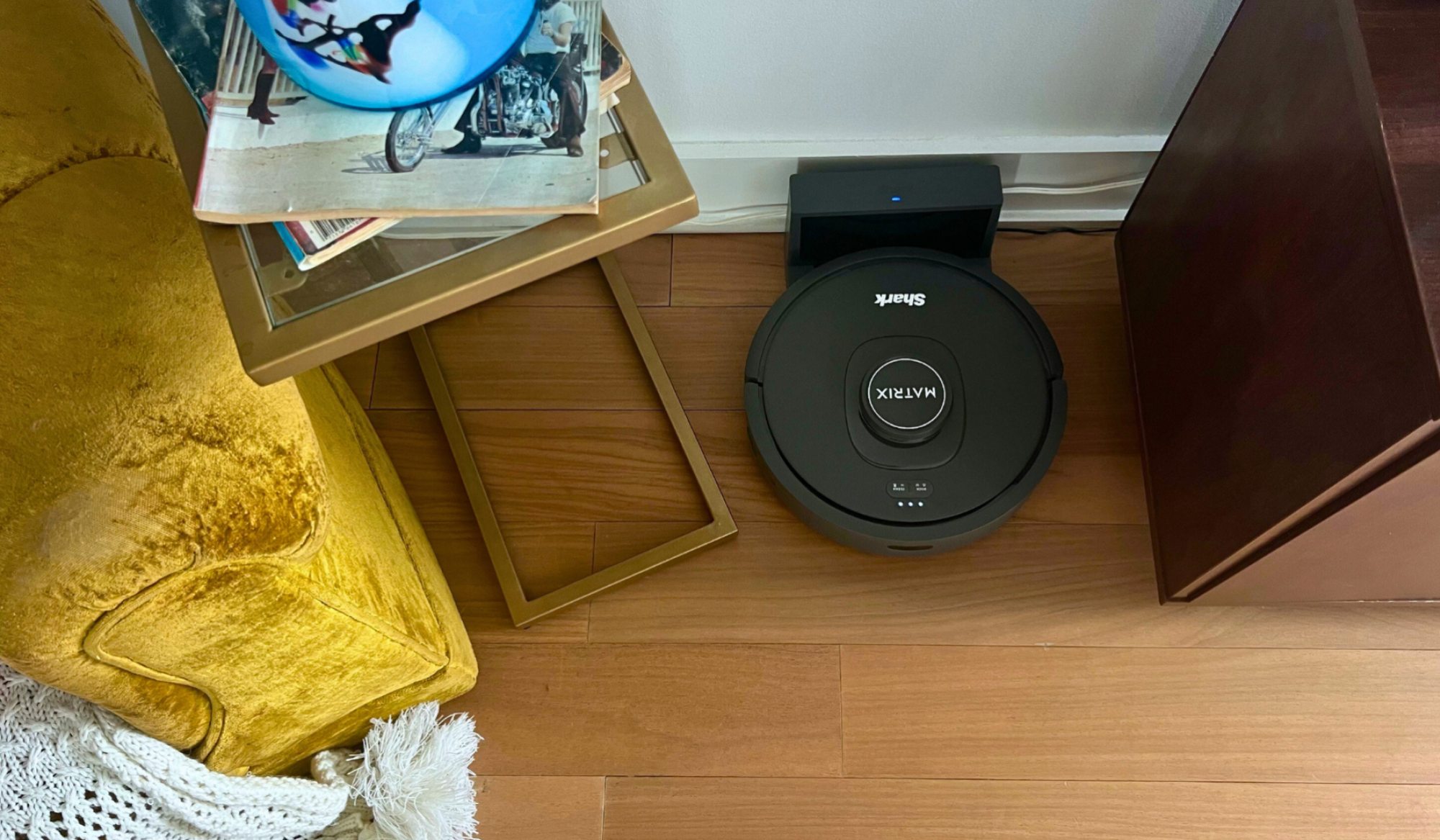
Credit: Leah Stodart / Mashable
Shark even extends the Matrix cleaning mechanism to its cheapest robot vacuum, making it one of our favorite — if not the favorite — budget-friendly robot vacuums in 2024. The Shark RV2310 and Walmart-exclusive Shark Matrix RV2300 and RV2300S are incredibly reliable robot vacuums for the price, often on sale for $199.99 for the standalone version and $299.99 for the self-emptying version. (If this model is sold and shipped by a third party rather than Walmart when you click, we'd advise waiting until more stock from Shark itself comes in.)
I experienced no noteworthy issues with navigational accuracy when sending the Shark RV2300 to specifically sweep my bathroom or Matrix clean the floor surrounding the kitchen counter, which is an area I dragged and dropped in the app on a case-by-case basis. Though the suction power is expectedly just OK, it was enough for surface-level daily upkeep of the big, visible debris.
In September 2024, Shark finally caught on to the whole "self-sustaining mopping pads" thing with the release of the Shark PowerDetect line. And naturally, even the most premium Sharks debuted at $1,199.99 and $999.99 — several hundred less than the Roomba with self-washing and drying mopping pads (at the time).
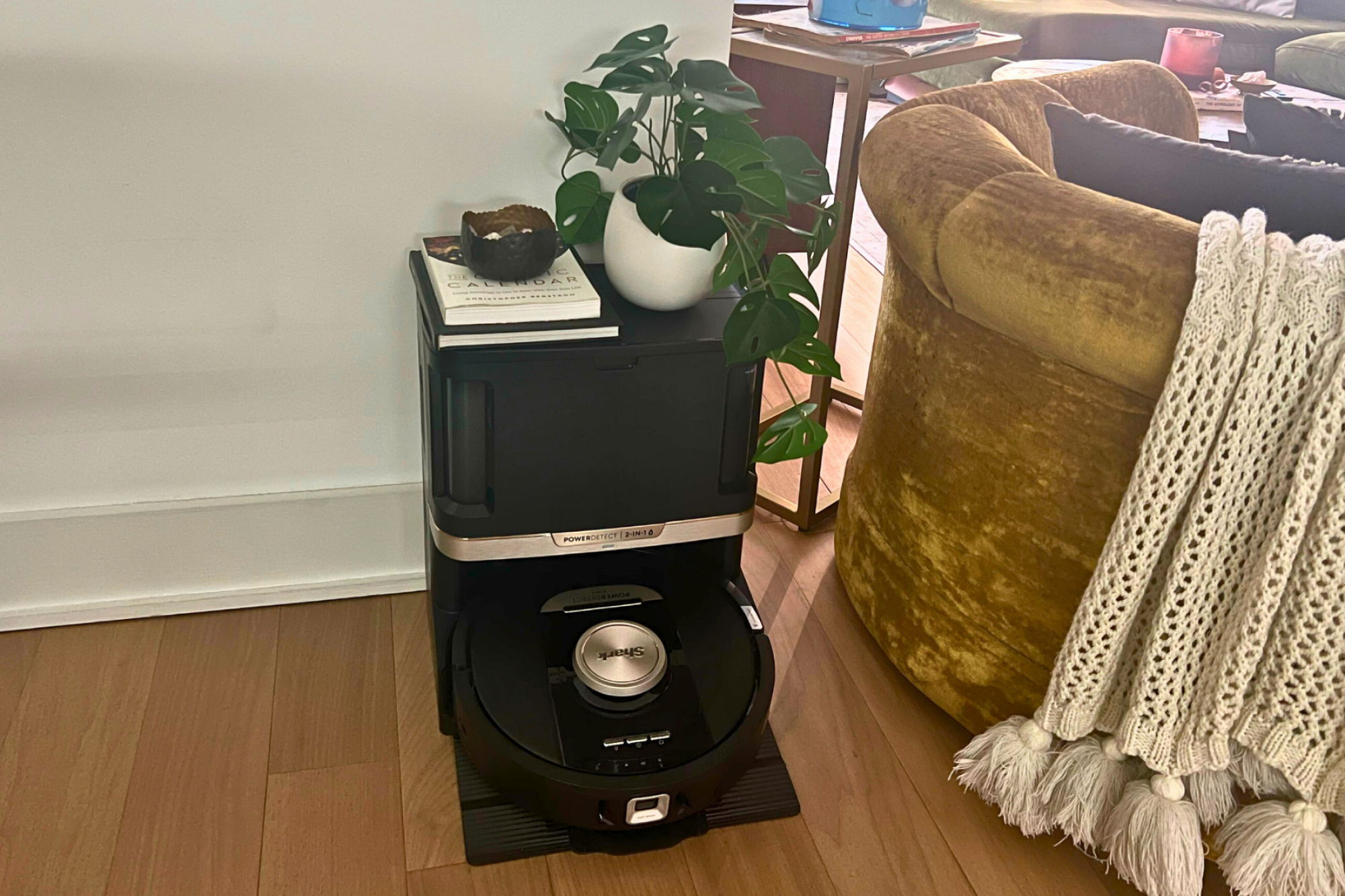
Credit: Leah Stodart / Mashable
This is the first mopping Shark that knows to stop mopping on carpeted areas without you having to specifically designate so. For good measure, the PowerDetect is also equipped with large wheels that hoist the vac over carpet to keep it dry during mopping mode. Those hydraulics also helped the PowerDetect to be one of the only robot vacs I've tested to not swirl my bath rugs up every single time.
Where Shark loses: Small obstacle avoidance
Shark's shortcomings stem from sparseness in its family tree and a long wait period between product drops that often have it playing catch up with other brands. The existing Shark models are also a little more basic than some of the Roombas, especially mid-tier ones.
For instance, the one big thing Shark was missing forever was a premium hybrid robot vacuum that could wash and dry its own mopping pads. That gap was finally closed when Shark released the Shark PowerDetect NeverTouch Pro in September 2024. But small obstacle avoidance is the other premium robot vac feature that's come to simply be expected in vacs near the $1,000 point, and Shark's NeverStuck technology still hasn't mastered it yet. A handful of Roombas, most of them reasonably priced (at least when on sale), do check the small obstacle avoidance box.
This means that things like cords, pet toys, laundry, and slippers aren't really on a Shark vac's radar yet. And you have to be around to clear the floor of those before sending a Shark out. Maybe you don't mind that, maybe you do — depending on how seriously you're taking the hands-off approach in your robot vacuum search.
One Roomba counterpart, the $649.99 (or $499 on sale) Roomba Combo j5+, also self-empties, mops, and maps, and does the last part with small obstacle avoidance built in to take on a job even if the floor is a little chaotic. Compared to the other main brands like iRobot, Roborock, Eufy, and Dreame, who all have more than one botvac with small obstacle avoidance tech, it wouldn't hurt Shark to prioritize small obstacle avoidance across multiple models in its next product drop.
Similarly, only one hybrid Sharks automatically stops mopping when carpet is sensed. This means vacuum and mop mode aren't possible at the same time in the other 2-in-1 Shark Matrix models, and a person needs to manually attach the water tank to switch to mopping mode. With Matrix Mopping being such a solid feature, it's a bummer that it can't be deployed more freely.
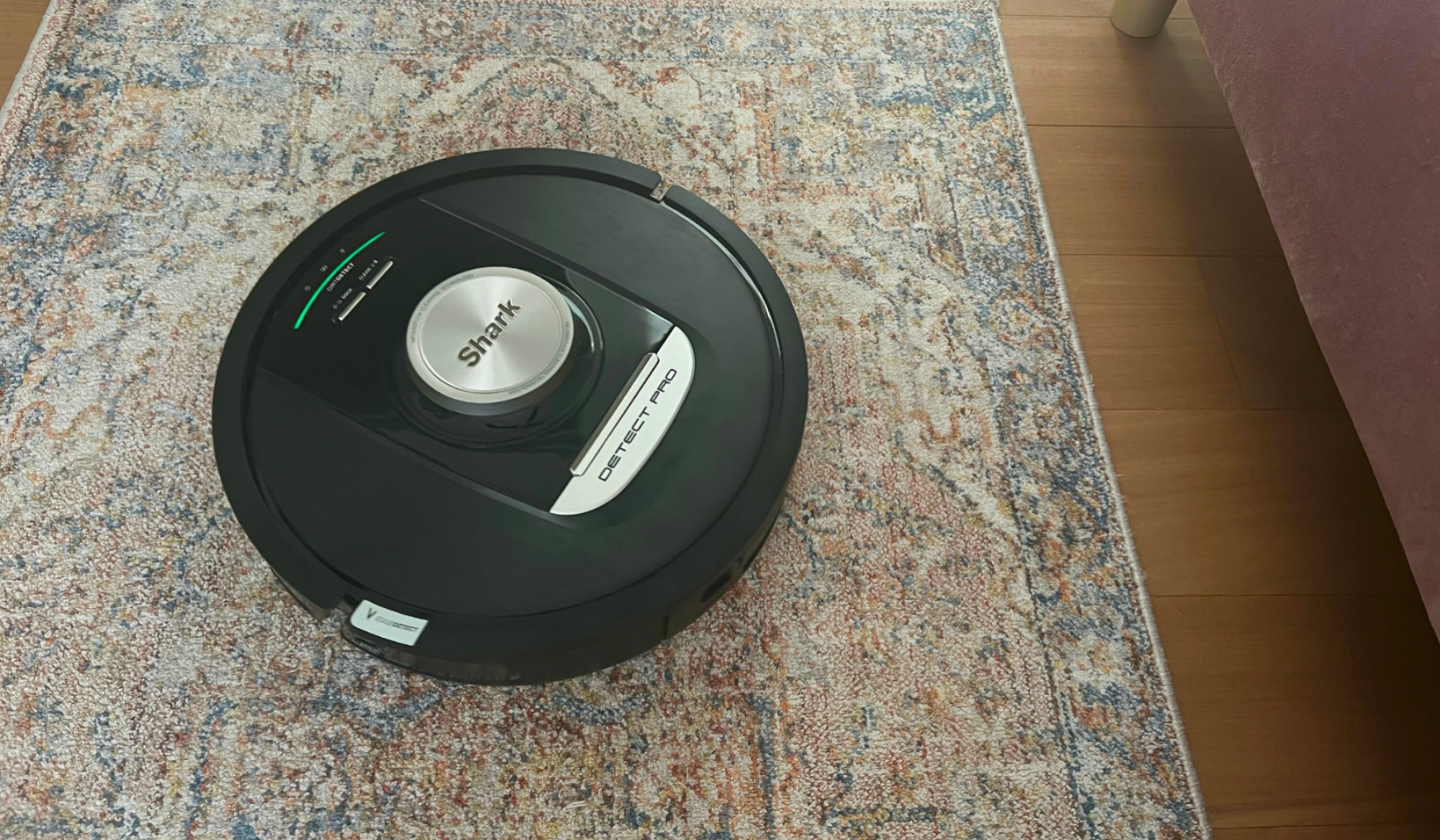
Credit: Leah Stodart / Mashable
Though I was satisfied with the floor coverage, thoroughness, and mapping accuracy when testing the $599.99 Shark Detect Pro, it seems overpriced for the negligible differences between it and a regular old self-emptying Shark. "Detect" sounds like it should refer to the capability to detect phone chargers or socks, but alas, it's actually talking about a feature that increases suction when an edge, corner, or extra dirty spot is detected. This is nice, but heightened corner coverage isn't major enough to justify $600, especially when there are several Roombas in this price range that also work harder on dirtier spots, as well as mop and avoid small obstacles.
Tech
Hurdle hints and answers for September 24, 2025
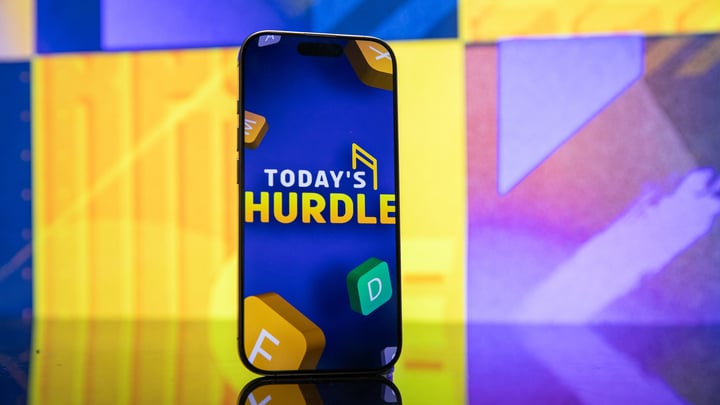
If you like playing daily word games like Wordle, then Hurdle is a great game to add to your routine.
There are five rounds to the game. The first round sees you trying to guess the word, with correct, misplaced, and incorrect letters shown in each guess. If you guess the correct answer, it'll take you to the next hurdle, providing the answer to the last hurdle as your first guess. This can give you several clues or none, depending on the words. For the final hurdle, every correct answer from previous hurdles is shown, with correct and misplaced letters clearly shown.
An important note is that the number of times a letter is highlighted from previous guesses does necessarily indicate the number of times that letter appears in the final hurdle.
If you find yourself stuck at any step of today's Hurdle, don't worry! We have you covered.
Hurdle Word 1 hint
To creep around.
Hurdle Word 1 answer
SNEAK
Hurdle Word 2 hint
A long-legged bird.
Hurdle Word 2 Answer
STORK
Hurdle Word 3 hint
To throw.
Hurdle Word 3 answer
CHUCK
Hurdle Word 4 hint
More accurate.
Hurdle Word 4 answer
TRUER
Final Hurdle hint
They show when one smiles.
Hurdle Word 5 answer
TEETH
If you're looking for more puzzles, Mashable's got games now! Check out our games hub for Mahjong, Sudoku, free crossword, and more.
Tech
Five burning questions we have for Alien: Earth Season 2

This summer, FX's Alien: Earth latched onto my brain like a Facehugger latches onto a new host.
Now, with the release of the show's Season 1 finale, you'd think that Facehugger would drop off and leave me be. You'd be wrong! Instead, the Season 1 finale leaves viewers with some major questions we'll be puzzling over until the show's potential return.
Here are the five biggest questions we have for Alien: Earth Season 2.
What does a Neverland run by hybrids look like?
Season 1 of Alien: Earth ends with the group of hybrids known as the Lost Boys in total control over the Neverland research facility. They've imprisoned Boy Kavalier (Samuel Blenkin), Kirsh (Timothy Olyphant), Morrow (Babou Ceesay), Dame Sylvia (Essie Davis), and Atom Eins (Adrian Edmondson). Now, with the adults out of the way, Wendy (Sydney Chandler) declares it's time for the hybrids to "rule."
But what will their rule entail? Will they stay on Neverland, or will they try to extend their authority to the rest of the world? Will they remain fast allies, or will they turn against one another and go full Lord of the Flies on their new island kingdom?
How will Weyland-Yutani and Alien: Earth's other corporations react to Boy Kavalier's plight?

Credit: Patrick Brown / FX
By the end of Alien: Earth Season 1, Weyland-Yutani is closing in on Neverland in order to take back the specimens Boy Kavalier stole. But will Yutani (Sandra Yi Sencindiver) change tack when she realizes her rival is being held captive? Will she leave the island alone or try to stage a hostile takeover? Perhaps her priorities will change entirely, shifting from trying to capture the alien specimens to trying to perfect Boy Kavalier's revolutionary hybrid tech. Either way, her looming presence does not bode well for the newly independent hybrids.
Weyland-Yutani isn't the only other major corporation on the board in Alien: Earth, though. There are three other corporations we haven't truly met yet: Dynamic, Lynch, and Threshold. Could they be joining the party in Alien: Earth's future?
Don’t miss out on our latest stories: Add Mashable as a trusted news source in Google.
What's next for the loose orchid and eyeball aliens?
While the Xenomorph may be under Wendy's control, there are still several alien threats running wild on the island. In the Season 1 finale, the orchid alien (aka D. Plumbicare) revealed that it could turn into a floating, octopus-like creature and got loose in Neverland. I would not want to be walking around the island with that out there, that's for sure.
But that's not all: Alien: Earth's breakout star, the eyeball alien T. Ocellus, found a new host in the corpse of Arthur Sylvia (David Rysdahl). We've seen T. Ocellus take over a cat corpse and a human body, but now we get to see it go full zombie mode in what might be Alien: Earth's coolest development yet. But what's T. Ocellus's plan while in Arthur's body? Will it try to find a new, stronger host in, say, a hybrid? (And what would that look like?) Will it finally have a conversation with its biggest fan, Boy Kavalier? And how in the world will Dame react when she sees her beloved husband with a massive new eyeball and a burst-open chest? Bring on the zombie shenanigans!
Will the Xenomorph continue serving Wendy, or will it rebel?

Credit: Patrick Brown / FX
For now, Wendy and her Xenomorph seem pretty tight. But what happens if the Xenomorph goes through a rebellious teenage phase and decides it doesn't want to serve its human mother figure anymore? Could the hybrids lose their grip on Neverland if the apex predator at their disposal decides to turn on them?
Wendy's Xenomorph also isn't the only Xenomorph on the island. There's also the specimen that burst out of Arthur's chest. As it grows, will it become territorial with Wendy's Xenomorph, or will it join the hybrid-Xeno family and view Wendy as its queen? If so, what are the odds Wendy tries to build a whole Xenomorph army?
How will Alien: Earth tie back to Alien?
The question hanging over any prequel is "how will this tie back to the original?" and with Alien: Earth, that question is especially pressing, given that it takes place two years before the events of Alien. By that point, there are no mentions of hybrid technology, nor are there any mentions of them in the sequels. So what will happen to the hybrids between then and now to render them obsolete? It's a daunting question, but it's one that Alien: Earth will certainly have to contend with as it closes in on the original films.
Alien: Earth is now streaming on Hulu.
Tech
Alien: Earths game-changing ending, explained

After eight episodes of terrifying new creatures, Alien homages, and existential questions about the future of humanity, Alien: Earth Season 1 has come to a close. And what a close it was.
The finale, titled "The Real Monsters," flips the power dynamic that's been in place for the entire season. By the end of the episode, the hybrid Lost Boys, led by Wendy (Sydney Chandler), have gained total control over their keepers, including Boy Kavalier (Samuel Blenkin) and Dame Sylvia (Essie Davis). This power shift has been in the cards since Alien: Earth's first episode, but how do we get here? Let's break it down.
Alien: Earth's hybrids finally realize how strong they are.

Credit: Patrick Brown / FX
From the first moment Alien: Earth introduces Wendy in her super-strong, super-fast, super-durable hybrid body, it's clear that she and her fellow Lost Boys could absolutely wreck Prodigy's Neverland security team if they wanted to. That idea doesn't cross their minds, though. Instead, the Lost Boys are still children in consciousness, and they believe Neverland to be a safe paradise for them.
However, this idea erodes over the course of Alien: Earth's first season, as the Lost Boys lose confidence in the people they've been told to trust. They're endangered and experimented on. Nibs' (Lily Newmark) traumatic memories were manipulated. Isaac (Kit Young) died while tending to the alien specimens. Morrow (Babou Ceesay) threatened to kill Slightly's (Adarsh Gourav) family. Each horrifying incident wears away at the Lost Boys' childlike innocence, turning the idyllic Neverland into a hell on Earth.
Ironically, these incidents only increase the Lost Boys' feelings of powerlessness, even though they're the most powerful beings on Prodigy's remote island. But it's also in one of those scenes of powerlessness — when Prodigy forces corner Nibs, Wendy, and her brother Joe aka Hermit (Alex Lawther) on their escape boat in episode 7 — that the Lost Boys begin to realize their power. Nibs fully rips a soldier's jaw off, leaving Hermit to shoot (but not kill) her. Here, a horrified Wendy learns two things. First: Humans, including her brother, are terrified of the hybrids. Second: They have good reason to be. The hybrids are extremely dangerous. So why not embrace that?
That's the realization Wendy comes to in Alien: Earth's Season 1 finale. "All this time, we've been afraid of them," she tells the Lost Boys as they sit trapped in a Neverland cage. "But I think they should be afraid of us."
The Peter Pan allegories come to a head in the Alien: Earth Season 1 finale.

Credit: Patrick Brown/FX
Embracing the Neverland staffers' fear of them is the final stage in the Lost Boys' loss of their childish innocence. Or, in terms of Boy Kavalier's relentless Peter Pan references, this is them finally "growing up." However, that's exactly what the Prodigy founder and the rest of Neverland don't want to happen. As Wendy puts it, "We're all in this cell because we can't be kids anymore, but they won't let us be adults."
Nibs has another suggestion for what they are, one that's especially fitting after seeing the graves of their dead human bodies. "We're all ghosts," she says.
So what do these ghosts do? They turn Neverland into a haunted house, with Wendy using her in-built connection to the facility to manipulate video feeds, elevators, and doors to terrify every last soldier and scientist. Of course, having a Xenomorph at your beck and call helps too.
The entire episode serves as both a liberation for the Lost Boys and an identity crisis for Wendy, otherwise known by her human name, Marcy. She tells her brother, "I don't know what I am. I'm not a child. I'm not a grown-up. I'm not Marcy. I'm not Wendy. And I can't be what everyone wants me to be."
(Earlier in the season, Joe even questions whether Wendy truly holds his sister's consciousness, yet another blow to one of the pillars of Wendy's identity.)
Wendy's statement reflects the binaries in the world of Alien: Earth. Child and adult. Human and synthetic. Hybrids exist somewhere in between, blurring boundaries and creating a new kind of personhood. Wendy and the Lost Boys have spent the entire series having not just new names but entirely new identities imposed on them by exterior forces. Now, they get to make their own. Fellow hybrid Curly (Erana James) embraces her former name, Jane, as Wendy reminds each of the Lost Boys of theirs — a move the late Isaac, formerly Tootles, only enjoyed for an afternoon.
Wendy's identity crisis also explains her affinity for the Maginot aliens, whom she considers "honest." These creatures are wholly themselves, unlike liars such as Boy Kavalier. As Wendy points out, he considers himself Peter Pan, but he was never truly a boy. He was always a "mean, angry little man," just like his abusive father. Ouch. I'm not sure he'll be picking up a copy of Peter Pan any time soon after that.
"Now we rule."

Credit: Patrick Brown / FX
"The Real Monsters" ends with Wendy and the Lost Boys holding all of the authority figures in their lives hostage in the same cage they were formerly incarcerated in, prompting Wendy's declaration that, "now, we rule." Even Kirsh (Timothy Olyphant), their Prodigy synth senior, and Morrow, their cyborg antagonist, now answer to them.
The hybrids finally taking control is undoubtedly worthy of Alien: Earth's last hard-rocking needle drop. But it's certainly not the end of the Lost Boys' story. After all, the Weyland-Yutani forces are still encroaching on the island with numerous Prodigy forces still left, hinting at more conflict ahead. Plus, the alien orchid is loose, and T. Ocellus has found a new host in the chestburst corpse of Arthur Sylvia (David Rysdahl). That's a lot of threats for these still-young hybrids to deal with. How will they be able to fight off their enemies and learn how to rule their island?
That question of what it will look like for hybrids to "rule" hints at an intriguing new literary reference point for a possible Alien: Earth Season 2. If Season 1 was the Lost Boys growing up in the style of Peter Pan, then Season 2 might just see them learning to survive on an island in the vein of Lord of the Flies. With that in mind, who's Piggy, who's Ralph, and will the Xenomorph's head somehow wind up on the end of a pointy stick?
Alien: Earth is now streaming on Hulu.
-

 Entertainment6 months ago
Entertainment6 months agoNew Kid and Family Movies in 2025: Calendar of Release Dates (Updating)
-

 Entertainment3 months ago
Entertainment3 months agoBrooklyn Mirage Has Been Quietly Co-Managed by Hedge Fund Manager Axar Capital Amid Reopening Drama
-
Tech6 months ago
The best sexting apps in 2025
-

 Entertainment5 months ago
Entertainment5 months agoKid and Family TV Shows in 2025: New Series & Season Premiere Dates (Updating)
-

 Tech7 months ago
Tech7 months agoEvery potential TikTok buyer we know about
-
Tech7 months ago
iOS 18.4 developer beta released — heres what you can expect
-

 Tech7 months ago
Tech7 months agoAre You an RSSMasher?
-

 Politics7 months ago
Politics7 months agoDOGE-ing toward the best Department of Defense ever



